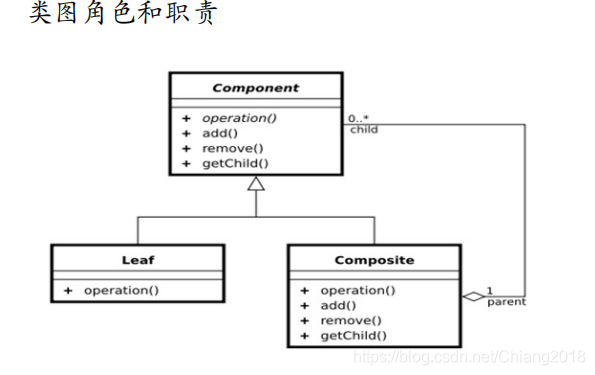组合模式(Composite Pattern),又叫部分整体模式,是用于把一组相似的对象当作一个单一的对象。组合模式依据树形结构来组合对象,用来表示部分以及整体层次。这种类型的设计模式属于结构型模式,它创建了对象组的树形结构。使得客户以一致的方式处理单个对象以及对象的组合。
组合模式实现的最关键的地方是:简单对象和复合对象必须实现相同的接口。这就是组合模式能够将组合对象和简单对象进行一致处理的原因。
组合模式的优点:
组合模式使得客户端代码可以一致地处理对象和对象容器,无需关系处理的单个对象,还是组合的对象容器。
将”客户代码与复杂的对象容器结构“解耦。
可以更容易地往组合对象中加入新的构件。
组合模式的缺点:
使得设计更加复杂。客户端需要花更多时间理清类之间的层次关系。(这个是几乎所有设计模式所面临的问题)。
示例代码如下:
运行结果如下:


